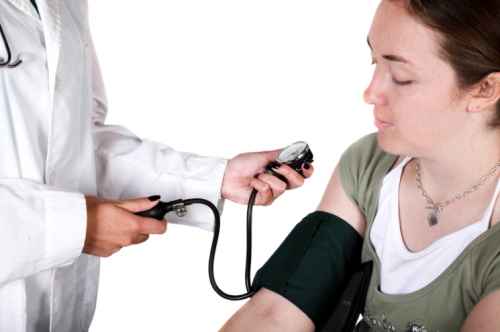Introduction
In the realm of education and learning, particularly within childcare settings, emergencies can develop at any moment. Recognizing instant action responsibilities is vital for teachers, caretakers, and moms and dads alike. Not only does it encompass fundamental emergency treatment expertise, yet it likewise includes a collection of methods and abilities that have to be grasped to make certain the safety of children. From handling small wounds to providing an EpiPen throughout an allergic reaction, this detailed overview will delve into the myriad responsibilities that include instant actions in academic environments.
Immediate Action Responsibilities: What to Do When Emergency situations Arise
The term "immediate reaction duties" describes the actions and decisions that require to be taken when an emergency situation takes place. These situations can vary from small cases like play area incidents to more severe situations entailing clinical emergency situations. The focus here is on quick reactions that can considerably affect the result for children involved.
Understanding Emergency Situations in Education
Emergency scenarios can vary widely in nature and seriousness. Some usual instances include:
- Choking Incidents: Children might accidentally choke on food or little objects. Allergic Reactions: Circumstances calling for EpiPen management due to extreme allergies. Minor Injuries: Scrapes, cuts, and contusions from play. Medical Emergencies: Bronchial asthma strikes or seizures that demand prompt attention.
Recognizing Bronchial asthma Signs in Children
Asthma is a common condition among youngsters and understanding exactly how to acknowledge its symptoms can conserve lives. Usual signs consist of:
- Coughing frequently Shortness of breath Wheezing audios when exhaling Chest tightness
Choking Prevention Techniques for Educators
Preventing choking incidents ought to be a top priority in educational settings. Below are some reliable methods:
Age-Appropriate Foods: Make sure that food supplied is suitable for children's ages. Supervision Throughout Meals: Constantly display children while they eat. Education on Food Choices: Teach children concerning foods that position choking hazards.EpiPen Management Protocols
When managing allergies, EpiPens can be life-saving devices. Below's exactly how to provide one:
Remove the EpiPen from its case. Hold the EpiPen strongly and get rid of the safety and security cap. Press the idea versus the outer upper leg up until it clicks. Hold it in place for about 10 seconds before removing.Managing Minor Wounds Effectively
Injuries are inevitable when dealing with energetic kids; hence, recognizing exactly how to handle small wounds is essential:
Clean the wound with soap and water. Apply a disinfectant solution. Cover with a sterile bandage.Child Defibrillation Guidance
For significant situations where a kid may experience cardiac arrest, understanding exactly how to utilize an AED (Automated External Defibrillator) is important:
Turn on the AED and comply with voice prompts. here Attach pads as shown on the device. First Aid Training Tweed Heads Ensure nobody is touching the youngster prior to providing a shock if recommended by the AED.Building Instructor Self-confidence Via Training
Educators play a crucial role in emergency situation reaction scenarios; hence it's vital they feel great in their capacities:

HLTAID012 Qualification Australia Overview
The HLTAID012 qualification equips educators with essential emergency treatment abilities tailored specifically for instructional atmospheres:
- Duration of training generally covers over several hours including both written and practical components. It covers subjects such as mouth-to-mouth resuscitation techniques, managing injuries, and event reporting protocols.
Written vs Practical Elements of First Aid Training
Training programs like HLTAID012 make up both theoretical expertise and hands-on practice:
|Part|Description|| --------------------|--------------------------------------------------|| Written|Recognizing methods, laws, and treatments|| Practical|Hands-on practice making use of mannequins or simulation|
Renewal Timelines for Emergency treatment Certifications
Staying upgraded with first aid accreditations is essential for instructors:

- Most qualifications need renewal every 3 years. Regular updates keep teachers well-informed concerning new practices or adjustments in protocols.
Childcare Centre Emergency treatment Set Essentials
A well-stocked emergency treatment set is important in any type of childcare centre setup:
Essential Items Include:
Band-aids of various sizes Antiseptic wipes Gauze pads Adhesive tape Disposable gloves ScissorsFirst Help Fundamentals for Parents
Parents have to also be outfitted with crucial first aid expertise:
Know how to deal with high temperatures effectively. Recognize signs of dehydration or warm exhaustion throughout hot weather. Create a home-based emergency treatment set tailored for childhood years needs.Childcare Safety Risks Assessment
Regular evaluations aid recognize potential threats within child care settings-- some usual hazards consist of:
Slippery floors Sharp things within reach Playground tools security checksRegularly evaluating these threats guarantees safety and security standards are constantly maintained.
FAQs About Immediate Response Responsibilities
1) What ought to I do if a kid chokes?
- Administer back impacts followed by abdominal thrusts if they can not breathe or speak.
2) Just how commonly should I renew my HLTAID012 certification?
- Every three years as per Australian regulations.
3) What things are important for a childcare first aid kit?
- Band-aids, antiseptics, gauze pads, scissors, disposable handwear covers must all be included.
4) How can I stop playground mishaps?
- Conduct regular examinations of play ground devices and manage kids throughout playtime actively.
5) What are asthma action plans?
- An individualized strategy developed with healthcare providers outlining actions to take throughout an asthma attack.
6) Exactly how do I recognize indications of allergic reactions?
- Look out for hives, swelling around the face or mouth, difficulty breathing or hissing sounds; act quickly!
Conclusion
Immediate reaction obligations are not just tasks; they personify a commitment to safeguarding kids's health and wellness and wellness within instructional settings. By recognizing protocols related to choking prevention, EpiPen administration, small wound management, and extra-- instructors can efficiently respond when emergencies develop while with confidence constructing count on amongst moms and dads and stakeholders alike.
By staying educated via accreditations like HLTAID012 give emergency treatment in education and learning courses and maintaining first aid kits equipped-- every person figures in in creating safe and secure discovering atmospheres for growth and exploration while making sure every kid's safety and security stays paramount!